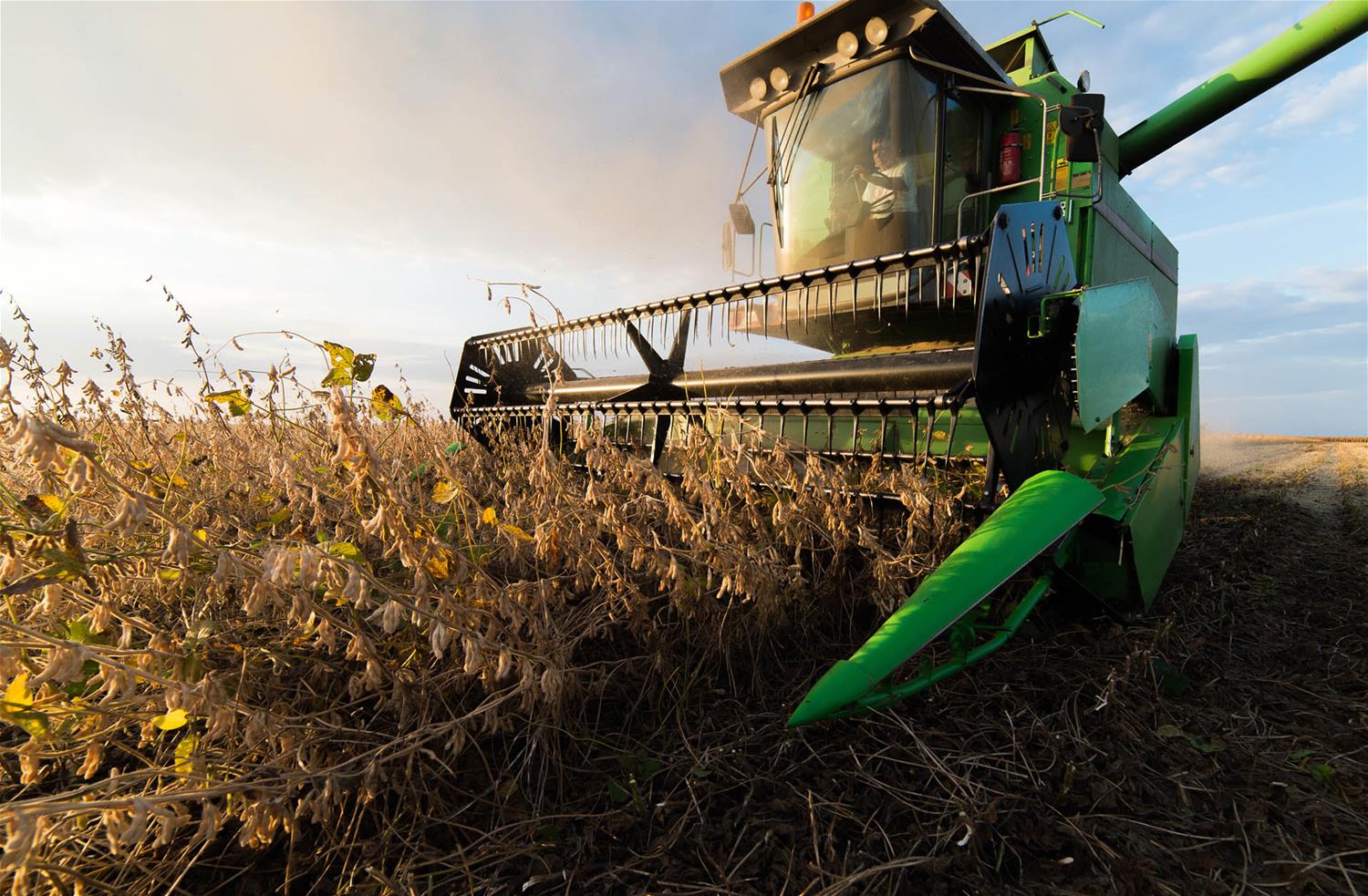U.S. soybean farmers are committed to providing safe, high quality and sustainable ingredients—thereby creating a dependable supply of food for our communities. Using innovative techniques, farmers produce soybean crops in an environmentally friendly way. Once the soybeans are harvested, they’re used in numerous goods and soyfoods across America.
U.S. Soybean Production Basics
Agriculture is an essential industry to the U.S. economy, and U.S. soybean farmers work hard to keep shelves stocked and feed families around the world. In fact, American farmers work every day with the goal of producing 60% more food by 2050 to feed our growing population, which is expected to increase by two billion people over the next 30 years. Despite the growing demand for soybean crops, sustainable soybean production is a top priority.
Soybeans are one of the most versatile plants in the U.S. They’re used in recipes and household goods alike. Soybean fields are also resilient to changing soil conditions. Harvesting soybeans involves growing genetically modified and non-genetically modified beans using both conventional and organic farming practices to meet consumer demand.
Innovative U.S. Soybean Production
U.S. farmers are highly innovative and use technology to create more sustainable and functional soybean crops. They’re constantly planting new types of soy to yield nutritional and more functional harvests while embracing sustainable production practices that protect the land into the future.
Farmers pursue innovation in soybean production by using regenerative agriculture and biotechnology farming—farming with scientific tools and discoveries. To support these aims, the United Soybean Board works with farmers to establish best practices that allow soy farmers to be more efficient with their inputs and work toward producing a better bean.
Producing Soybeans with Agriculture Technology and Biotechnology
Different types of agriculture technology (AgTech), particularly biotechnology, are bringing farming into the modern age. Bioengineering has multiple benefits for soybean farmers, including reducing herbicide usage, preventing weeds and insects, increasing harvest size and profit, and helping the environment.
Farmers are also turning to sustainable techniques like precision farming to grow their soy crops. Precision farming increases efficiency by helping farmers identify exactly what their soybean crops need and when they need it. Technologies like GPS and satellite mapping also help farmers use their land more effectively. These innovative practices help yield a nutritional product, protect against harsh weather, and address hunger around the world.
How Is Soy Harvested?
Soybean harvesting is similar to harvesting other crops grown in the United States. Soybeans are harvested in the fall when they’re mature. As soybeans mature, their leaves start to turn yellow, and when the leaves of the soybeans turn brown and fall off, their pods are left exposed and the soybean fields are ready to be harvested.
Soybean fields are harvested using a combine, or a large machine used to harvest grains. The combine’s header harvests soybeans by cutting and collecting the soybean plants, removing their stems and pods, and moving the harvested soybeans into its tank. Once the combine’s tank is full, farmers empty the harvested beans into a grain truck or wagon and take them to a grain dealer or storage facility.
The Most Popular Soybean Crops
The yellow soybean is the most common soybean crop in the U.S. Most processed soybean products, including miso and tofu, are made from yellow soybeans. Other types of soybean crops include green, black, white, and red soybeans.
Uses of Soybeans
Once harvested, soybeans have a range of uses. Most farmers grow beans that are sold as animal feed or processed into soybean oil. Soybean oil can be used as cooking oil, sold in stores as "vegetable oil," or used by the food industry in products and on menus. Soybean oil also has industrial applications such as rubber, lubricants, and adhesives. Others grow high-quality beans that are made into soyfoods like tofu.
No matter the soybean use, growing soybeans is more than a job for U.S. soybean farmers—it’s their life, legacy, and passion. You can sense their dedication every time you bite into a delicious soy dish.
Many people want to incorporate soy into their diets but feel confused by the mixed messages around soy. Debunk these common soy misconceptions and learn why soyfoods deserve a spot on your table by visiting our Soy Myths and Facts page.

What are the growth stages of soybeans?
Soybeans have two distinct growth stages: the vegetative stage and the reproductive stage. During the vegetative stage, the plant emerges from the soil and starts to flower. In the reproductive stage, the soybean moves from its flowering stage to its fully mature stage. As soybeans mature, their leaves start to turn yellow. The soybeans are ready to be harvested when their leaves start to brown and fall off.
How long do soybeans take to grow?
Soybean crops are usually planted between the late spring and mid-summer months. They’re harvested in the fall when their remaining leaves fall off and their pods are exposed.
What type of crop are soybeans?
Soybeans, as the name implies, are beans! Also known as legumes, soybeans are closely related to foods like peas, alfalfa, and clover.